What’s the most expensive rock? Blue diamonds take the crown as the most valuable rocks on Earth, renowned for their rarity and spectacular shine; discover more about these gems and other valuable rocks at rockscapes.net! Learn about the unique geological processes and exceptional beauty that drive up the prices of rare stones like red diamonds, blue garnets, and jadeite, and explore how these precious materials are used in landscaping and design to add a touch of luxury and timeless appeal.Unearth the secrets of earth’s most prized possessions with valuable insights, investment opportunities, and natural wonders.
1. Understanding the Value of Rocks and Gemstones
What makes a rock or gemstone expensive? The value of rocks and gemstones hinges on factors like rarity, beauty, and demand. Rare gemstones with unique colors, exceptional clarity, and significant carat weight command the highest prices. The geological conditions required to form these stones are often very specific, making their occurrence limited and thus increasing their value.
- Rarity: The less available a gemstone is, the more valuable it becomes.
- Beauty: Exceptional color, clarity, and brilliance enhance a gemstone’s appeal.
- Demand: High demand from collectors and jewelers drives up prices.
- Geological Formation: Specific conditions create unique, valuable stones.
2. The Reigning Champion: Blue Diamond
What makes blue diamonds the most expensive rocks?
Blue diamonds are the most expensive rocks in the world due to their extreme rarity and striking color. The presence of trace amounts of boron during their formation gives them their distinctive blue hue. Blue diamonds are highly sought after by collectors and investors, which drives their prices to astronomical levels.
- Rarity: Extremely rare, found in very few locations worldwide.
- Color: Distinctive blue hue due to boron traces.
- Demand: Highly coveted by collectors and investors.
- Notable Example: The Oppenheimer Blue Diamond sold for $57.5 million.
3. The Alluring Red Diamond
Why are red diamonds so valuable?
Red diamonds are among the rarest and most valuable gemstones on Earth. With fewer than 30 known to exist, most weighing less than half a carat, their red color comes from the plastic deformation of the crystal lattice rather than impurities. The Argyle Mine in Australia is the primary source of these precious stones.
- Extreme Rarity: Fewer than 30 red diamonds exist worldwide.
- Unique Color Origin: Color derived from crystal lattice deformation.
- Primary Source: Argyle Mine in Australia.
- Notable Example: The Moussaieff Red Diamond, weighing 5.11 carats, was acquired for $8 million in 2011.
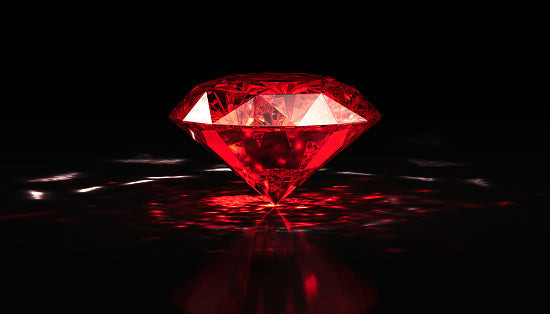 Moussaieff Red Diamond, showcasing its remarkable red hue derived from the plastic deformation of its crystal lattice.
Moussaieff Red Diamond, showcasing its remarkable red hue derived from the plastic deformation of its crystal lattice.
4. Blue Garnet: A Rare Color-Changing Gem
What is unique about blue garnet?
Blue Garnet is an exceptionally rare and expensive gemstone known for its color-changing properties. It appears blue-green in daylight but turns purple under artificial light. Found in limited deposits in Madagascar, the United States, Turkey, and Russia, its unique color shift and scarcity make it highly prized.
- Color Change: Blue-green in daylight, purple under artificial light.
- Limited Deposits: Found in Madagascar, USA, Turkey, and Russia.
- High Value: A 4.2-carat stone sold for $6.8 million in 2003.
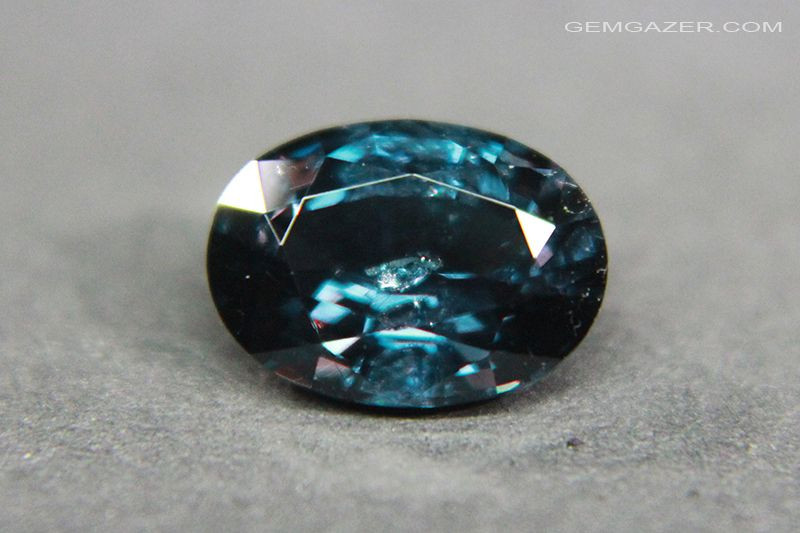 Blue Garnet gemstone displaying its unique color-changing properties under different lighting conditions.
Blue Garnet gemstone displaying its unique color-changing properties under different lighting conditions.
5. Taaffeite: The Misidentified Marvel
Why is taaffeite so rare and valuable?
Taaffeite is an extremely rare mineral often confused with spinel, discovered already cut and polished in 1945. Its distinction lies in its double refraction, unlike spinel. Found in alluvial deposits in Sri Lanka and Tanzania, its rarity and unique optical properties contribute to its high value.
- Discovery: First found as a cut and polished stone.
- Distinction: Double refraction sets it apart from spinel.
- Locations: Sri Lanka and Tanzania.
- Value: High-grade material can fetch around $35,000 per carat.
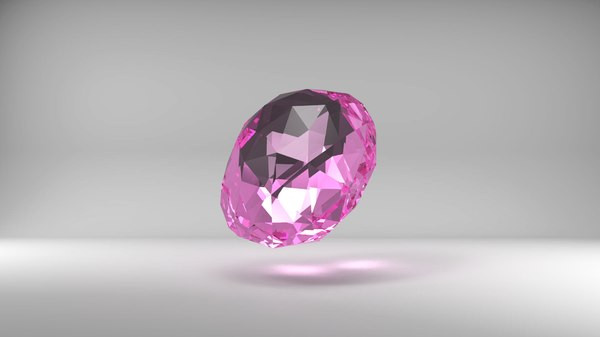 Taaffeite gemstone, illustrating its rarity and the double refraction that distinguishes it from spinel.
Taaffeite gemstone, illustrating its rarity and the double refraction that distinguishes it from spinel.
6. Grandidierite: Madagascar’s Gem
What makes grandidierite so valuable?
Grandidierite, discovered in Madagascar in 1902, is a very rare gem known for its pearly, semi-transparent bluish-green hue. Typically found in boron- and aluminum-rich rocks, its scarcity and unique coloration drive its value, reaching up to $20,000 per carat for high-grade material.
- Discovery Location: Madagascar.
- Color: Pearly, semi-transparent bluish-green.
- Geological Setting: Boron- and aluminum-rich rocks.
- Price: Up to $20,000 per carat for high-grade specimens.
7. Jadeite: The Emperor of Jade
Why is jadeite considered the most valuable form of jade?
Jadeite is the most expensive and beautiful variety of jade, prized for its dark green, translucent appearance. Significantly rarer than other jade types like nephrite, high-quality jadeite can command prices over $20,000 per carat, with some exceptional pieces selling for over a million dollars per carat.
- Appearance: Dark green and translucent.
- Rarity: Much rarer than nephrite jade.
- Value Factors: Transparency and depth of color.
- Market: High-grade material can exceed $20,000 per carat.
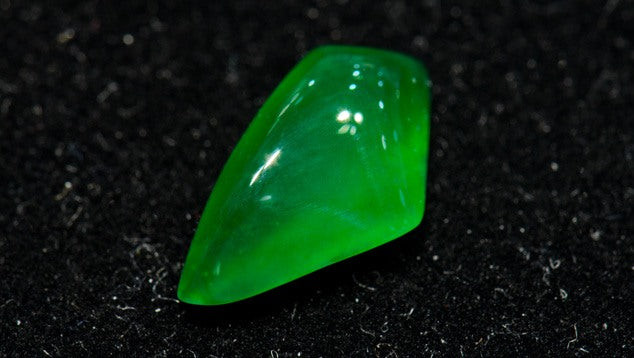 Jadeite gemstone, highlighting its dark green and translucent appearance, the most valuable form of jade.
Jadeite gemstone, highlighting its dark green and translucent appearance, the most valuable form of jade.
8. Serendibite: The Complex Inosilicate
What are the key characteristics of serendibite?
Serendibite, first discovered in Sri Lanka in 1902, is an extremely rare gemstone and mineral. This inosilicate has a complex chemical formula involving calcium, boron, aluminum, and magnesium. Recently found in the Mogok region of Myanmar, its complexity and scarcity contribute to its value of around $18,000 per carat.
- Discovery: First found in Sri Lanka.
- Chemical Composition: Complex inosilicate with multiple elements.
- Recent Discovery: Mogok region of Myanmar.
- Price: Approximately $18,000 per carat.
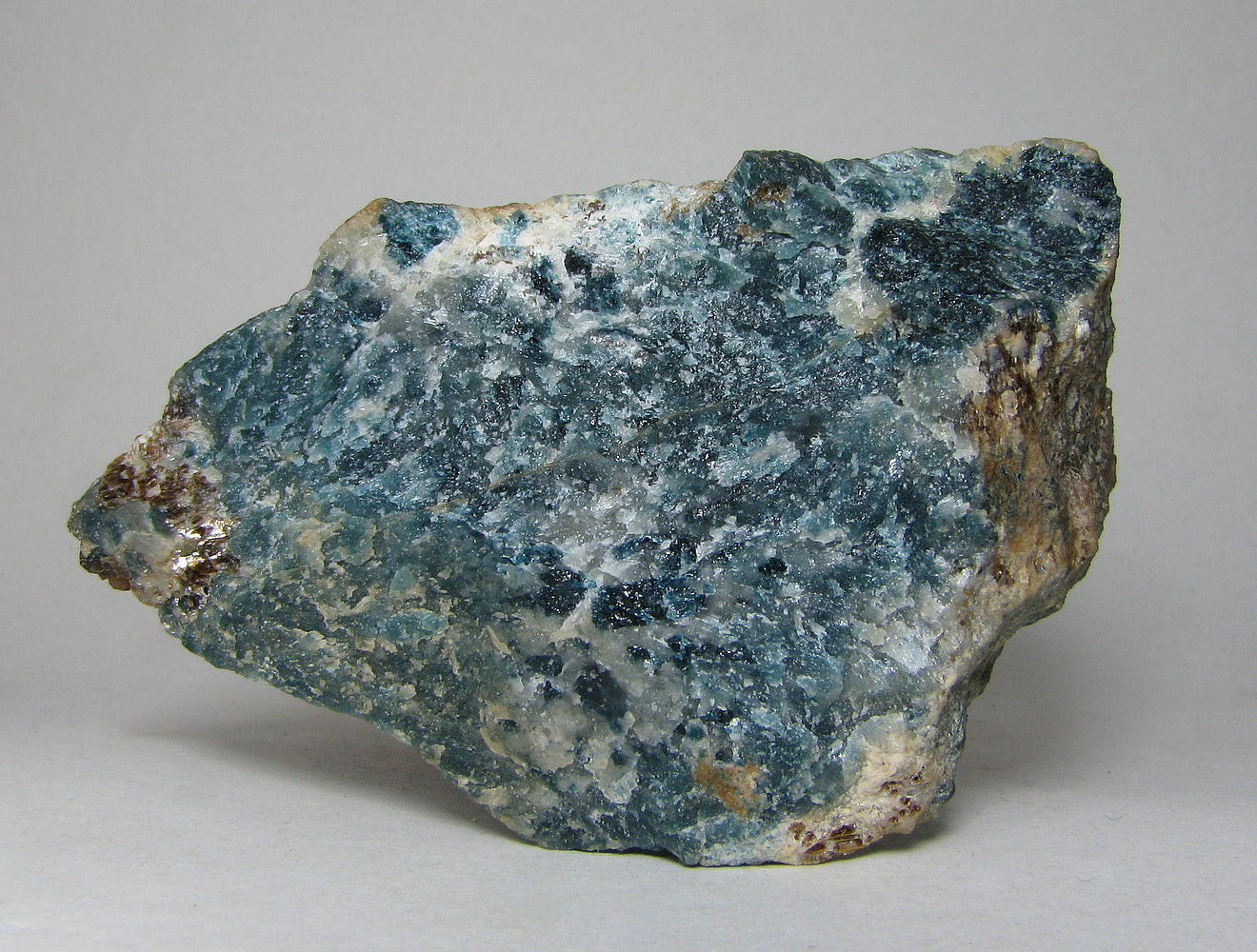 Serendibite gemstone, showcasing its rarity and complex inosilicate composition.
Serendibite gemstone, showcasing its rarity and complex inosilicate composition.
9. Diamond: The Classic Gemstone
Why are diamonds so popular and valuable?
Diamonds are renowned for their exceptional strength and durability, composed of pure carbon. Formed in cooled kimberlites over billions of years, they are a centerpiece in engagement rings and various jewelry. While commonly known, certain diamonds with exceptional color and clarity can command very high prices.
- Composition: Pure carbon.
- Formation: Cooled kimberlites over billions of years.
- Hardness: Known for their incredible strength and durability.
- Price: Standard diamonds are relatively affordable, but rare specimens can reach $15,000 per carat.
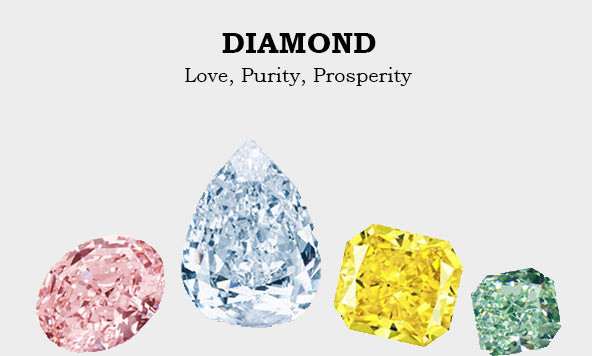 Classic Diamond gemstone, renowned for its exceptional strength, durability, and brilliance, composed of pure carbon formed over billions of years.
Classic Diamond gemstone, renowned for its exceptional strength, durability, and brilliance, composed of pure carbon formed over billions of years.
10. Ruby: The King of Gemstones
What gives rubies their intense red color?
Rubies, known as the “king of gemstones,” are prized for their shades of red, resulting from the presence of chromium oxide. Part of the corundum family, with a hardness of 9 on the Mohs scale, rubies are found on all continents except Antarctica, with the most valuable specimens coming from Asia.
- Color: Shades of red due to chromium oxide.
- Family: Part of the corundum family.
- Hardness: 9 on the Mohs scale.
- Origin: Most valuable rubies come from Asia.
- Price: Approximately $15,000 per carat.
 Ruby gemstone, showcasing its intense red color due to the presence of chromium oxide within its crystal structure.
Ruby gemstone, showcasing its intense red color due to the presence of chromium oxide within its crystal structure.
11. Alexandrite: The Color-Changing Marvel
How does alexandrite change color?
Alexandrite, a type of chrysoberyl, contains iron, titanium, and chromium impurities that cause it to change color. Green in sunlight and red in incandescent light, this color-changing property makes it one of the most unique and expensive gemstones. Discovered in 1830 in Russia’s Ural Mountains, it was named after Tsar Alexander II.
- Color Change: Green in sunlight, red in incandescent light.
- Impurities: Iron, titanium, and chromium.
- Discovery: Ural Mountains of Russia in 1830.
- Price: Smaller varieties can reach $12,000 per carat.
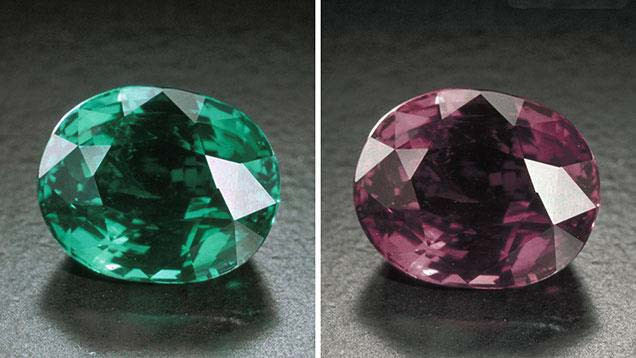 Alexandrite gemstone, displaying its color-changing properties under different lighting conditions: green in sunlight and red in incandescent light.
Alexandrite gemstone, displaying its color-changing properties under different lighting conditions: green in sunlight and red in incandescent light.
12. Red Beryl: The Red Emerald
Why is red beryl so rare?
Red beryl, described as the red emerald, is an extremely rare variety of beryl found only in Utah and New Mexico. Formed in mineralized rhyolite tuffs, the unique conditions required for its formation make it very difficult to find. Synthetic versions exist, and most natural cut stones weigh less than 1 carat.
- Composition: Beryllium, aluminum, and silicate.
- Location: Utah and New Mexico.
- Formation: Mineralized rhyolite tuffs.
- Price: High-quality material can reach $10,000 per carat.
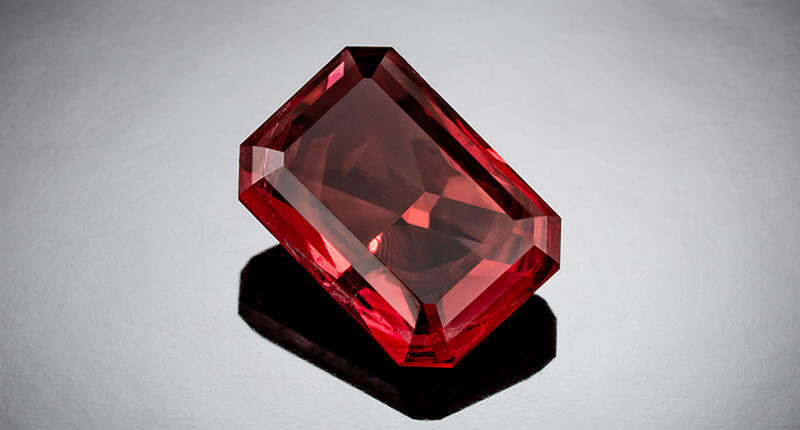 Red Beryl gemstone, showcasing its rare and vibrant red hue, found only in specific locations such as Utah and New Mexico.
Red Beryl gemstone, showcasing its rare and vibrant red hue, found only in specific locations such as Utah and New Mexico.
13. Padparadscha Sapphire: The Lotus Flower Stone
What gives padparadscha sapphire its unique color?
Padparadscha sapphires are extremely rare, primarily found in Sri Lanka, Tanzania, and Madagascar. Their unique combination of pink and orange hues makes them highly sought after by collectors. Due to their rarity, stones over 2 carats are exceptionally expensive.
- Color Combination: Pink and orange hues.
- Primary Locations: Sri Lanka, Tanzania, and Madagascar.
- Rarity: Very rare, especially in larger sizes.
- Price: High-quality gems can reach $8,000 per carat.
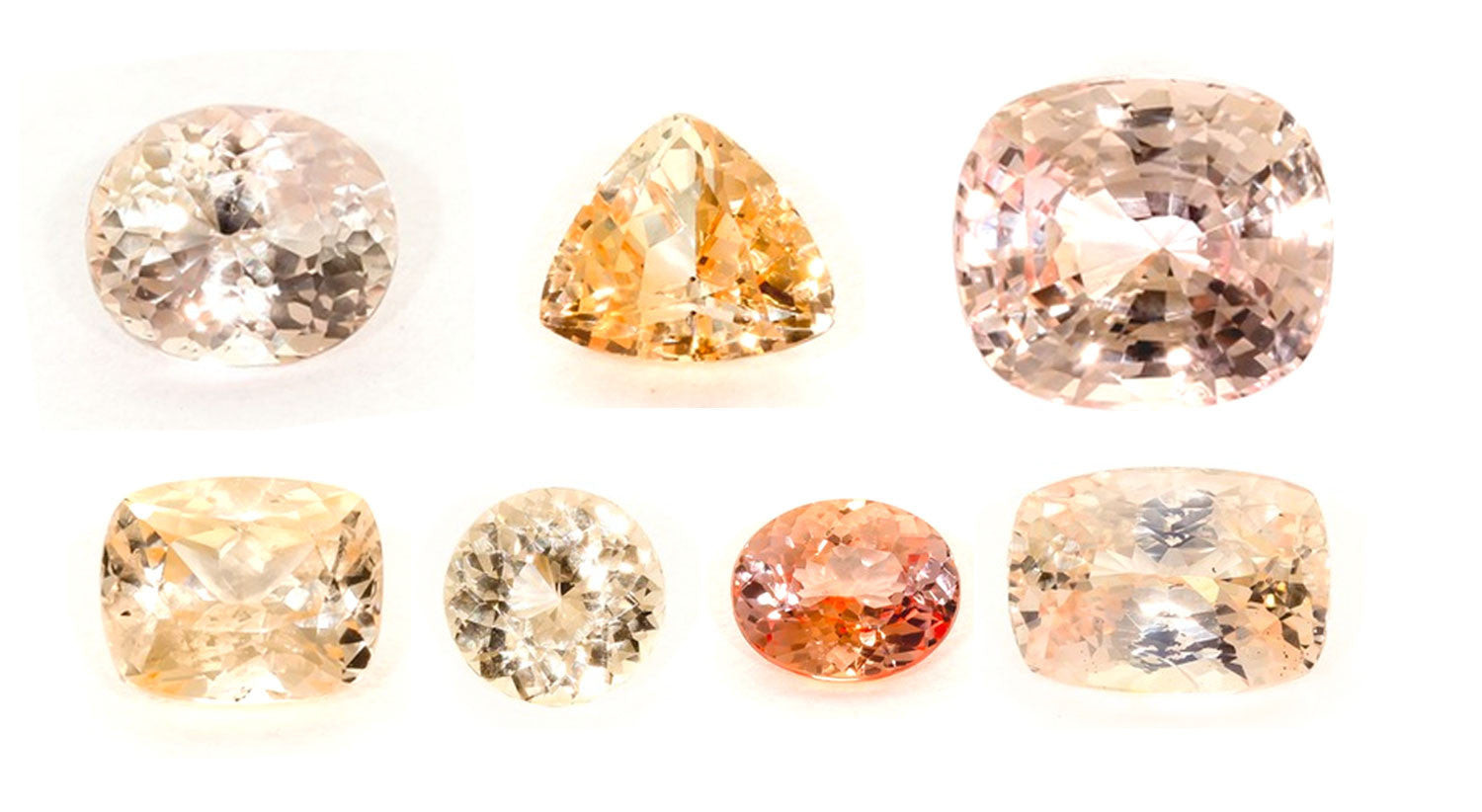 Padparadscha Sapphire gemstone, displaying its unique combination of pink and orange hues, making it highly sought after by collectors.
Padparadscha Sapphire gemstone, displaying its unique combination of pink and orange hues, making it highly sought after by collectors.
14. Musgravite: The Elusive Aluminum Oxide
Where is musgravite found?
Musgravite, an aluminum oxide with varying proportions of magnesium, iron, and zinc, was first discovered in 1967 in Musgrave Ranges, Australia. Other deposits are found in Tanzania, Greenland, Madagascar, and Antarctica. This very rare and hard gemstone can be green, blue, or purple.
- Composition: Aluminum oxide with magnesium, iron, and zinc.
- Discovery: Musgrave Ranges, Australia.
- Locations: Tanzania, Greenland, Madagascar, and Antarctica.
- Price: Approximately $6,000 per carat.
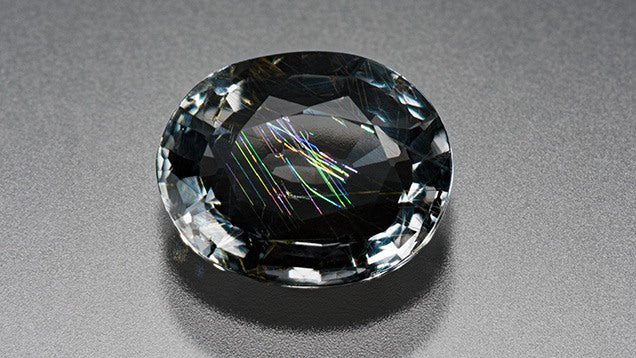 Musgravite gemstone, illustrating its varying proportions of magnesium, iron, and zinc within its aluminum oxide structure.
Musgravite gemstone, illustrating its varying proportions of magnesium, iron, and zinc within its aluminum oxide structure.
15. Sapphire: The Blue Beauty
What are the most famous sapphire deposits?
Sapphires are among the most famous gemstones, with well-known deposits in India, Vietnam, Russia, Thailand, Australia, the United States, China, Myanmar, Sri Lanka, and Madagascar. While typically blue, they can also be pink, green, or yellow-orange.
- Locations: India, Vietnam, Russia, Thailand, Australia, USA, China, Myanmar, Sri Lanka, and Madagascar.
- Colors: Blue, pink, green, or yellow-orange.
- Price: Medium blue tones can reach $4,000 – $6,000 per carat.
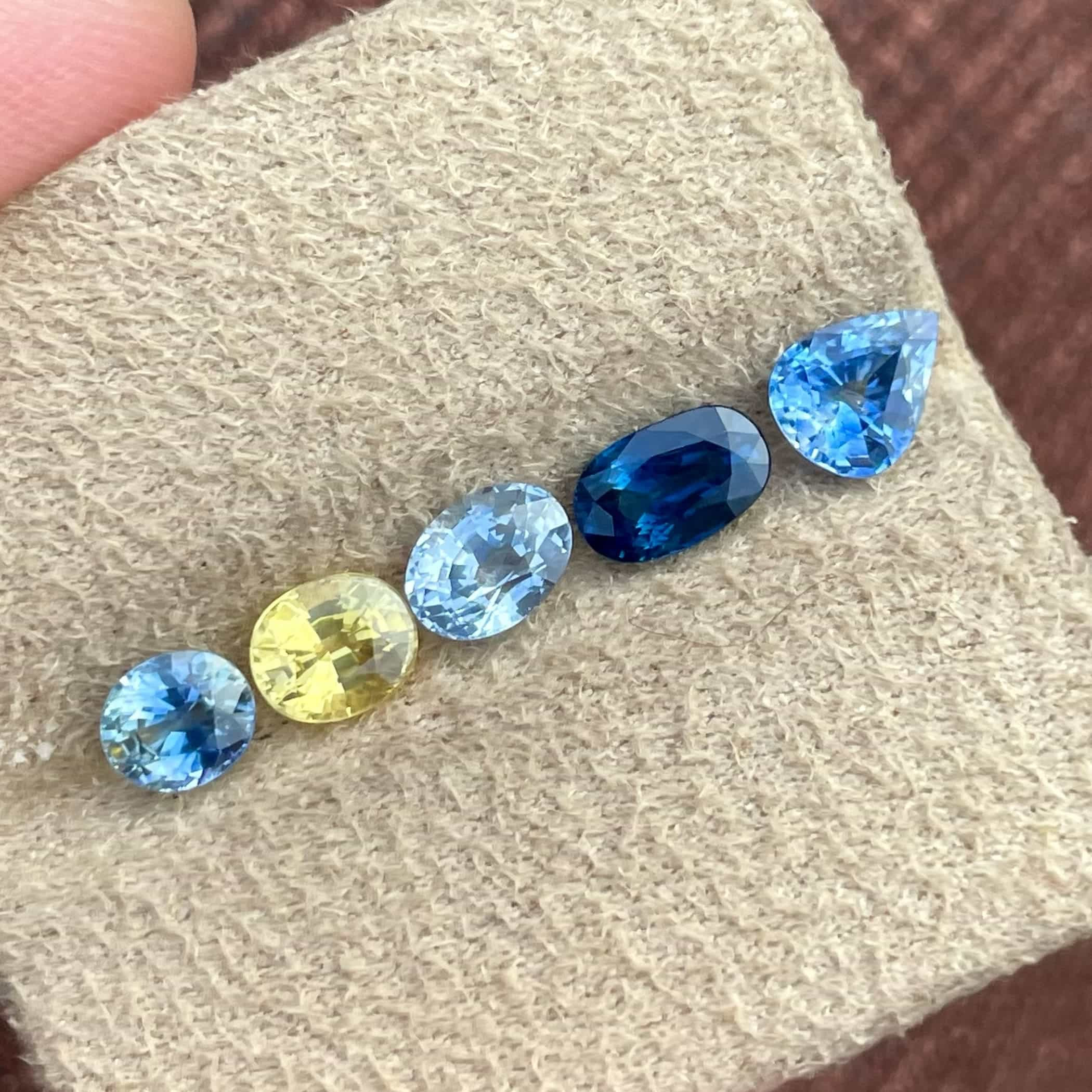 Sapphire gemstone, displaying its range of colors from blue to pink, green, and yellow-orange, sourced from various deposits worldwide.
Sapphire gemstone, displaying its range of colors from blue to pink, green, and yellow-orange, sourced from various deposits worldwide.
16. Benitoite: California’s Gemstone
Where does benitoite get its name?
Benitoite, composed of barium, titanium, and silica, is a brilliant blue gemstone that forms during the cooling stage of hydrothermally altered serpentinite. Found in San Benito County, California, it fluoresces strongly and glows with a bright blue color. It is the official gemstone of California since 1985.
- Composition: Barium, titanium, and silica.
- Location: San Benito County, California.
- Fluorescence: Strong, bright blue color.
- Price: Medium blue tones can reach $4,000 per carat.
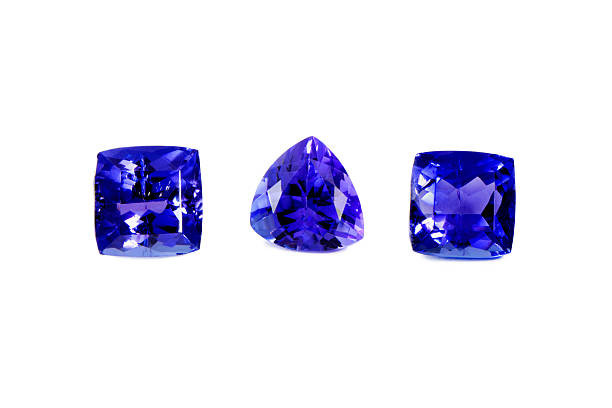 Benitoite gemstone, showcasing its brilliant blue color and strong fluorescence, found in San Benito County, California.
Benitoite gemstone, showcasing its brilliant blue color and strong fluorescence, found in San Benito County, California.
17. Black Opal: The Dark Beauty
What is the main characteristic of black opal?
Black opal is one of the rarest and most popular types of opal, predominantly sourced from Lightning Ridge, New South Wales, Australia. Its defining characteristic is its dark body tone, which allows it to display a vibrant play of color.
- Source: Lightning Ridge, New South Wales, Australia.
- Characteristic: Dark body tone.
- Price: Quality stones can reach $3,500 per carat.
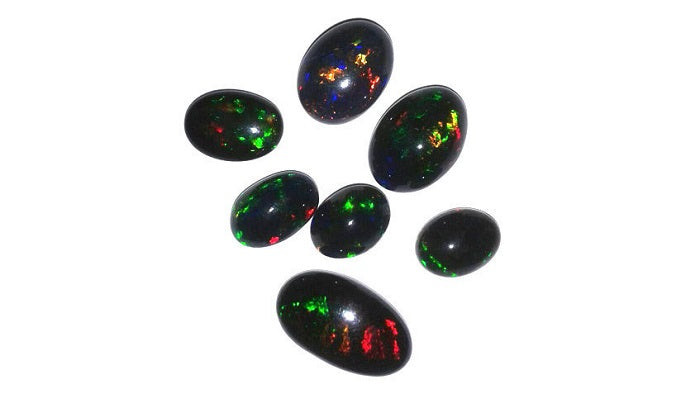 Black Opal gemstone, highlighting its dark body tone and vibrant play of color, primarily sourced from Lightning Ridge, New South Wales, Australia.
Black Opal gemstone, highlighting its dark body tone and vibrant play of color, primarily sourced from Lightning Ridge, New South Wales, Australia.
18. Demantoid Garnet: The Green Marvel
Why is demantoid garnet so valuable?
Demantoid garnet, a remarkable green variety of andradite garnet, was discovered in the mid-1800s in Russia. It is one of the rarest and most valuable garnets, with crystals typically smaller than 2 carats. Its brilliance and fire rival that of diamonds, making it highly sought after.
- Color: Green.
- Discovery: Mid-1800s in Russia.
- Size: Crystals typically smaller than 2 carats.
- Price: High-quality natural stones can reach $3,300 per carat.
 Demantoid Garnet gemstone, showcasing its vibrant green color and exceptional brilliance, discovered in the mid-1800s in Russia.
Demantoid Garnet gemstone, showcasing its vibrant green color and exceptional brilliance, discovered in the mid-1800s in Russia.
19. Poudretteite: The Pink Gem from Quebec
Where was poudretteite first discovered?
Poudretteite was first discovered at Mont Saint-Hilaire in Quebec in the 1960s by the Poudrette family. Naturally pink, with a Mohs hardness of 5, gem-quality poudretteite was first found in Mogok, Burma, in 2000, weighing 9.41 carats.
- Discovery: Mont Saint-Hilaire, Quebec.
- Color: Naturally pink.
- First Gem Quality Find: Mogok, Burma.
- Price: Approximately $3,000 per carat.
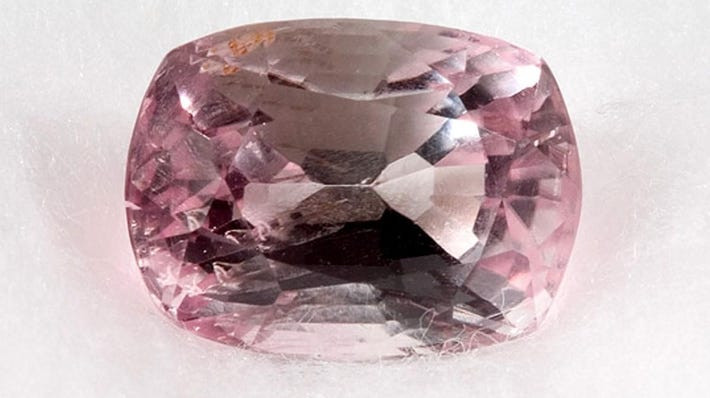 Poudretteite gemstone, illustrating its naturally pink color and discovery at Mont Saint-Hilaire in Quebec.
Poudretteite gemstone, illustrating its naturally pink color and discovery at Mont Saint-Hilaire in Quebec.
20. Fire Opal: The Fiery Mineraloid
Why is fire opal considered a mineraloid?
Fire Opal is a mineraloid, not a mineral, because it lacks the crystal structure required for minerals. As a hydrated form of silica, it can form in various colors depending on environmental conditions, diffracting light to shimmer in different colors.
- Classification: Mineraloid, not mineral.
- Composition: Hydrated form of silica.
- Color Variation: Forms in various colors.
- Price: Approximately $2,300 per carat.
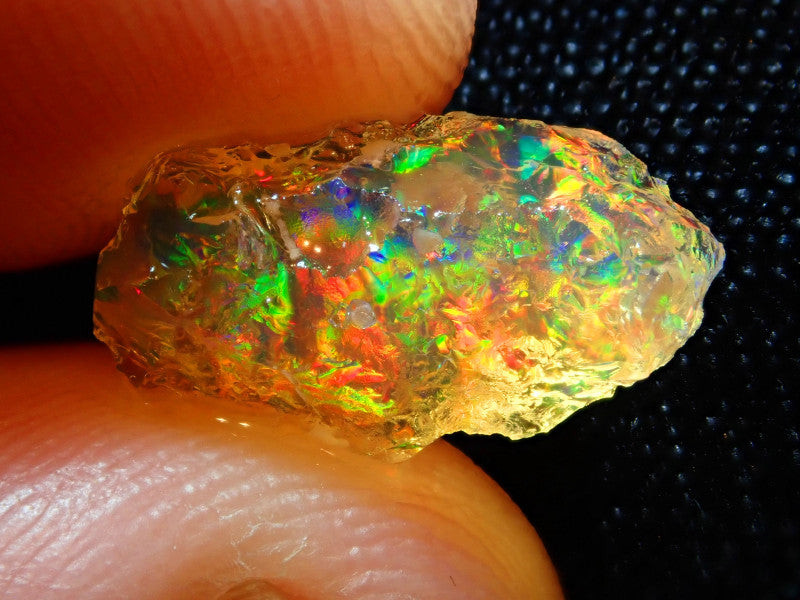 Fire Opal gemstone, showcasing its vibrant colors and mineraloid structure as a hydrated form of silica.
Fire Opal gemstone, showcasing its vibrant colors and mineraloid structure as a hydrated form of silica.
21. Jeremejevite: The Aluminum Borate Mineral
Where was jeremejevite first found?
Jeremejevite is an aluminum-bearing borate mineral with fluoride and hydroxide, first found in the Adun-Chilon Mountains in Siberia in 1883. With a hardness similar to quartz (6.5 to 7.5 on the Mohs scale), it is ideal for jewelry making.
- Composition: Aluminum-bearing borate mineral.
- Discovery: Adun-Chilon Mountains, Siberia.
- Hardness: 6.5 to 7.5 on the Mohs scale.
- Price: Approximately $2,000 per carat.
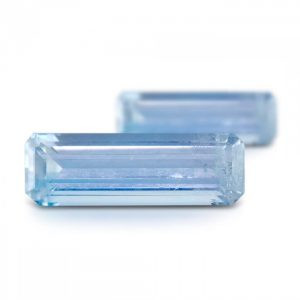 Jeremejevite gemstone, illustrating its aluminum-bearing borate mineral composition and discovery in the Adun-Chilon Mountains, Siberia.
Jeremejevite gemstone, illustrating its aluminum-bearing borate mineral composition and discovery in the Adun-Chilon Mountains, Siberia.
22. Tanzanite: Tanzania’s Treasure
Why is tanzanite considered rarer than diamonds?
Tanzanite, a blue-colored variety of zoisite, is found exclusively in northern Tanzania. Discovered in 1967 by a Masai tribesman, experts predict its supply could run out within 20-30 years, making it significantly rarer than diamonds.
- Location: Northern Tanzania only.
- Discovery: 1967 by a Masai tribesman.
- Composition: Blue-colored zoisite.
- Rarity: Supply could run out within 20-30 years.
- Price: High-quality stones can reach $1,200 per carat.
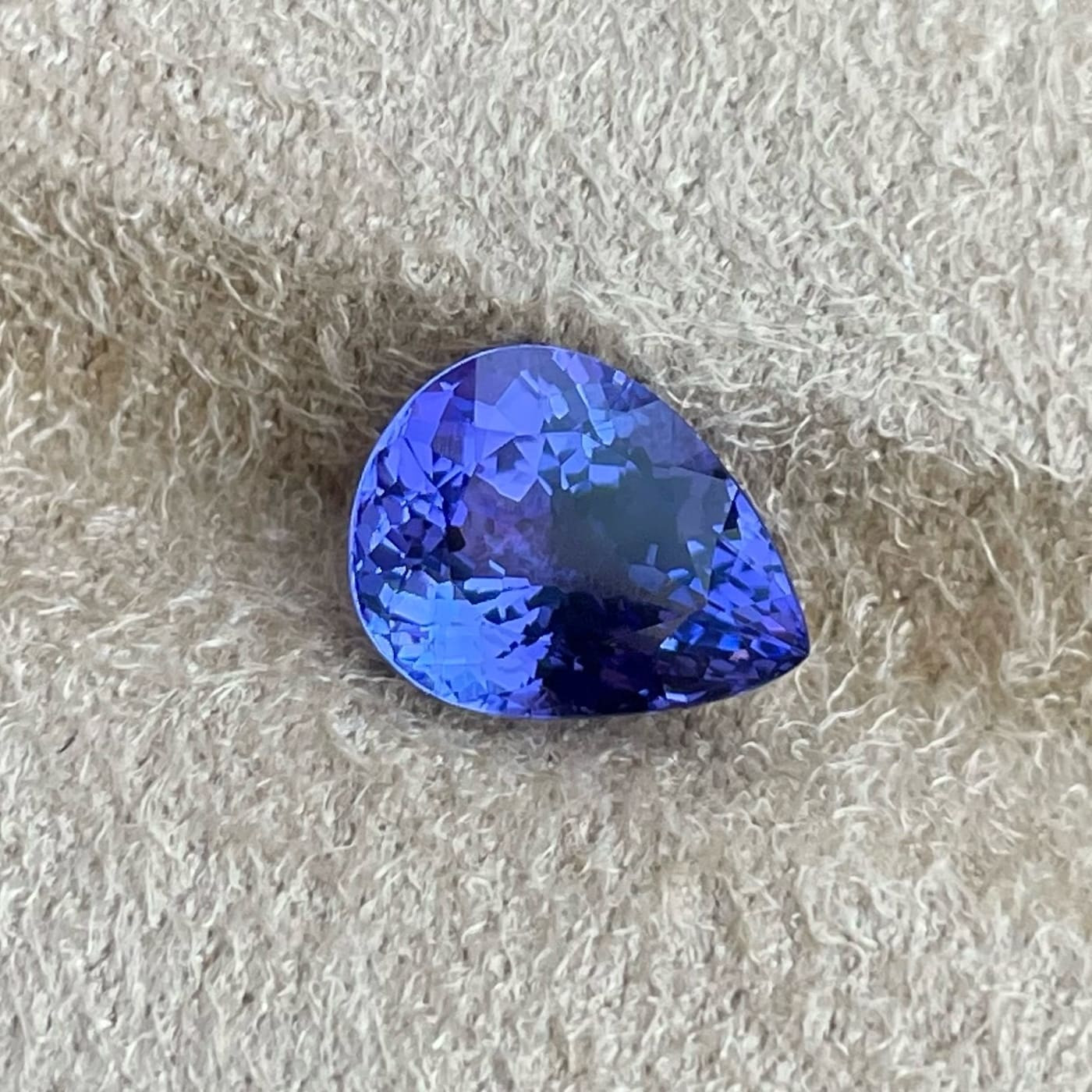 Tanzanite gemstone, showcasing its blue color and exclusive origin in northern Tanzania, making it rarer than diamonds.
Tanzanite gemstone, showcasing its blue color and exclusive origin in northern Tanzania, making it rarer than diamonds.
23. Using Expensive Rocks in Landscaping
How can expensive rocks enhance landscape design?
Expensive rocks and gemstones can significantly enhance landscape design by adding unique beauty and value to outdoor spaces. Incorporating these materials can create focal points, elevate the aesthetic appeal, and increase property value.
- Focal Points: Use rare stones as centerpieces in gardens.
- Aesthetic Appeal: Adds luxury and sophistication to landscapes.
- Property Value: Increases overall property value.
- Custom Designs: Incorporate stones into custom water features or rock gardens.
24. Geological Perspective on Rock Formation
What geological conditions are required for these expensive rocks to form?
The formation of expensive rocks and gemstones requires specific geological conditions that are rare and unique. Factors such as intense pressure, high temperatures, and the presence of certain chemical elements contribute to the creation of these valuable materials.
- High Pressure: Necessary for diamond formation deep within the Earth’s mantle.
- High Temperature: Required for the crystallization of many gemstones in metamorphic rocks.
- Specific Elements: The presence of elements like boron (for blue diamonds) and chromium (for rubies) during formation.
- Unique Environments: Formation in specific geological settings like kimberlite pipes (diamonds) or hydrothermal vents (benitoite).
25. Investing in Rare Rocks and Gemstones
What are the key considerations when investing in rare rocks and gemstones?
Investing in rare rocks and gemstones can be a lucrative venture, but it requires careful consideration and expertise. Factors such as authenticity, certification, market trends, and storage conditions are crucial to ensure a successful investment.
- Authenticity: Verify the stone’s authenticity through reputable gemological labs.
- Certification: Obtain certifications such as GIA or AGS to ensure quality and value.
- Market Trends: Stay informed about market trends and demand for specific stones.
- Storage: Store gemstones in secure, climate-controlled environments to maintain their condition.
26. The Role of Rockscapes.net in Discovering Rare Rocks
How can rockscapes.net assist in finding and utilizing rare rocks?
Rockscapes.net serves as an invaluable resource for discovering and utilizing rare rocks in landscaping and design. The website provides extensive information, expert advice, and a network of suppliers to help clients find and incorporate these unique materials into their projects.
- Extensive Information: Detailed profiles of various rare rocks and gemstones.
- Expert Advice: Guidance from experienced landscape designers and geologists.
- Supplier Network: Connects clients with reputable suppliers of rare stones.
- Inspiration: Showcases innovative landscape designs incorporating rare materials.
27. E-E-A-T and YMYL Compliance in Rock Information
How does rockscapes.net ensure Expertise, Experience, Authoritativeness, and Trustworthiness (E-E-A-T)?
Rockscapes.net adheres to the highest standards of E-E-A-T to ensure the accuracy and reliability of its content, especially concerning topics that fall under Your Money or Your Life (YMYL). The site provides expert-reviewed information, showcases the experience of professionals, establishes authority through credible sources, and maintains trustworthiness through transparent practices.
- Expertise: Content is reviewed by geologists and landscape designers.
- Experience: Features case studies and project examples demonstrating practical applications.
- Authoritativeness: Cites reputable sources, including geological surveys and academic research.
- Trustworthiness: Maintains transparent editorial policies and user reviews.
28. SEO Optimization for Rock-Related Content
What are the key SEO strategies for rock-related content?
Effective SEO strategies are essential for ensuring that rock-related content reaches the target audience. Keyword research, on-page optimization, high-quality content, and link building are crucial for improving search engine rankings and visibility.
- Keyword Research: Identify relevant keywords such as “rare gemstones,” “expensive rocks,” and “landscape design with stones.”
- On-Page Optimization: Optimize titles, headings, meta descriptions, and image alt tags with relevant keywords.
- High-Quality Content: Provide valuable, informative, and engaging content that meets user intent.
- Link Building: Acquire backlinks from reputable websites in the geology and landscape design niches.
29. The Beauty and Sustainability of Natural Stone
How can using natural stone in landscaping contribute to sustainability?
Using natural stone in landscaping contributes to sustainability by reducing the need for manufactured materials, minimizing environmental impact, and promoting long-term durability. Natural stone is a renewable resource that can enhance the ecological balance of outdoor spaces.
- Reduced Manufacturing: Less reliance on energy-intensive manufacturing processes.
- Minimal Impact: Lower carbon footprint compared to synthetic materials.
- Durability: Long-lasting materials reduce the need for frequent replacements.
- Ecological Balance: Enhances biodiversity and soil health.
30. Future Trends in the Market for Expensive Rocks
What are the emerging trends in the market for expensive rocks and gemstones?
The market for expensive rocks and gemstones is constantly evolving, with emerging trends driven by factors such as technological advancements, changing consumer preferences, and new discoveries. Staying informed about these trends is essential for investors and enthusiasts.
- Lab-Grown Gemstones: Increasing acceptance and demand for lab-grown diamonds and other gemstones.
- Sustainable Sourcing: Growing emphasis on ethically sourced and environmentally responsible gemstones.
- Digital Marketplaces: Rise of online platforms for buying and selling rare rocks and gemstones.
- Customization: Increasing demand for personalized and unique gemstone jewelry and designs.
31. Utilizing Rocks in Garden Design
How can rocks be creatively used in garden design?
Rocks can be creatively used in garden design to add texture, structure, and natural beauty. From creating rock gardens and water features to using stones as edging and pathways, the possibilities are endless.
- Rock Gardens: Showcase alpine plants and create naturalistic settings.
- Water Features: Incorporate rocks into ponds, streams, and waterfalls.
- Edging: Define garden beds and pathways with decorative stones.
- Pathways: Create durable and visually appealing walkways.
32. Maintenance and Care of Stone Landscapes
What are the best practices for maintaining stone landscapes?
Proper maintenance and care are essential for preserving the beauty and longevity of stone landscapes. Regular cleaning, sealing, and weed control can help keep stone features looking their best.
- Cleaning: Regularly wash stones with mild soap and water to remove dirt and debris.
- Sealing: Apply sealant to protect porous stones from staining and weathering.
- Weed Control: Remove weeds and prevent their growth with herbicides or manual removal.
- Repair: Promptly repair any cracks or damage to prevent further deterioration.
33. The Symbolism and Meaning of Rocks in Different Cultures
What are the cultural significances of rocks around the world?
Rocks and gemstones hold significant symbolic and cultural meaning in various societies around the world. They are often associated with power, healing, protection, and spiritual enlightenment.
- Power and Authority: Used in royal regalia and symbols of leadership.
- Healing Properties: Believed to possess therapeutic benefits in traditional medicine.
- Protection: Worn as amulets and talismans to ward off negative energies.
- Spiritual Enlightenment: Used in meditation and spiritual practices to enhance awareness.
34. Finding Inspiration for Rock Landscapes
Where can one find inspiration for designing rock landscapes?
Inspiration for designing rock landscapes can be found in various sources, including nature, gardens, books, and online resources. Visiting natural rock formations, exploring botanical gardens, and consulting landscape design books can spark creativity and provide ideas. Rockscapes.net offers a wealth of inspirational content.
- Nature: Observe natural rock formations and landscapes.
- Gardens: Visit botanical gardens and parks with rock features.
- Books: Consult landscape design books and magazines.
- Online Resources: Explore websites and social media platforms for inspiration.
35. The Art of Stone Carving and Sculpture
What are some renowned stone carving techniques?
Stone carving and sculpture are ancient art forms that transform raw stone into intricate works of art. Various techniques, including carving, chiseling, and polishing, are used to create stunning sculptures and decorative objects.
- Carving: Removing material from the stone using tools.
- Chiseling: Shaping the stone with chisels and hammers.
- Polishing: Smoothing the surface of the stone to enhance its luster.
- Engraving: Creating detailed designs on the stone’s surface.
36. The Use of Rocks in Feng Shui
How are rocks used in Feng Shui to balance energy?
In Feng Shui, rocks are used to balance energy and create harmony in living spaces. Strategically placed stones can enhance the flow of Qi and promote well-being.
- Placement: Position rocks in areas where energy needs to be grounded or enhanced.
- Size and Shape: Choose stones of appropriate size and shape for the desired effect.
- Color: Select stones with colors that complement the surrounding environment.
- Arrangement: Arrange stones in formations that promote balance and harmony.
37. Addressing Client Challenges in Rock Selection
How does rockscapes.net help clients overcome challenges in rock selection?
Rockscapes.net addresses the challenges clients face in rock selection by providing detailed information, expert advice, and a curated selection of high-quality materials. The website assists clients in finding the perfect rocks for their landscaping projects, ensuring satisfaction and success.
- Detailed Information: Provides comprehensive details on different types of rocks.
- Expert Advice: Offers guidance from experienced landscape designers and geologists.
- Curated Selection: Features a carefully selected range of high-quality materials.
- Customer Support: Provides responsive customer support to address any questions or concerns.
38. Maximizing Google Discovery for Rock Content
What strategies increase the likelihood of rock-related articles appearing on Google Discovery?
To maximize the chances of rock-related articles appearing on Google Discovery, it’s essential to create high-quality, engaging content that caters to user interests and adheres to Google’s guidelines.
- Visually Appealing Content: Use high-resolution images and videos.
- Compelling Headlines: Craft attention-grabbing titles that pique curiosity.
- Mobile Optimization: Ensure the content is mobile-friendly and loads quickly.
- User Engagement: Encourage shares, comments, and likes on social media platforms.
39. Frequently Asked Questions (FAQ) About Expensive Rocks
What are some common questions people ask about expensive rocks?
Here are some frequently asked questions about expensive rocks, covering topics from their value and formation to their use in landscaping and investment.
- What is the most expensive rock in the world?
- Blue diamonds are typically considered the most expensive rocks, valued for their rarity and color.
- Why are some gemstones more expensive than others?
- Rarity, beauty, demand, and geological conditions all influence a gemstone’s value.
- How are expensive rocks used in landscaping?
- They are used as focal points, decorative elements, and to enhance property value.
- What geological conditions are necessary for the formation of rare rocks?
- Intense pressure, high temperatures, and specific chemical elements are crucial.
- Is it a good investment to buy rare gemstones?
- It can be lucrative, but requires expertise, authenticity verification, and market awareness.
- How can I verify the authenticity of an expensive gemstone?
- Obtain certification from reputable gemological labs like GIA or AGS.
- What is the role of Rockscapes.net in finding rare rocks?
- Rockscapes.net provides information, expert advice, and a network of suppliers.
- How does Rockscapes.net ensure the accuracy of its rock information?
- By adhering to E-E-A-T principles, ensuring expertise, experience, authoritativeness, and trustworthiness.
- What are some emerging trends in the gemstone market?
- Lab-grown gemstones, sustainable sourcing, and digital marketplaces are key trends.
- How do I care for a stone landscape to ensure longevity?
- Regular cleaning, sealing, and weed control are essential.
Ready to explore the fascinating world of expensive rocks and transform your landscape? Visit rockscapes.net today for inspiration, expert advice, and premium materials! Contact us at 1151 S Forest Ave, Tempe, AZ 85281, United States, or call +1 (480) 965-9011.